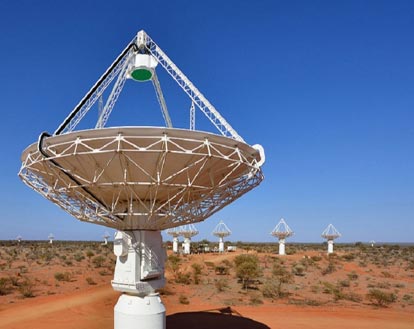A new radio telescope in Western Australia, known as Australian Square Kilometre Array Pathfinder (ASKAP), has discovered PKS B1740-517 – a galaxy located more than 5 billion light years away. Six of the 36 dishes on the radio telescope captured signals emitted from PKS B1740-517. This discovery demonstrates that ASKAP can detect galaxies and signals that other telescopes can’t.
“Astronomers are capable of detecting a galaxy from its hydrogen gas regardless if the starlight is hidden by dust or is faint. The signal was tiny but it clearly stood out in the ASKAP data. Many radio telescopes are hampered by radio interference, or unwanted signals, but the site where ASKAP is located is exceptionally quiet,” according to the Tech Times.
“At many observatories, this dip would have been hidden by background radio noise, but our site is so radio quiet it stood out clearly. These latest research findings are demonstrating that ASKAP can do what other telescopes can’t,” James Allison, from CSIRO, said.
Astronomers are optimistic that with the addition of 30 new satellites, more ground breaking discoveries may take place as early as next year.
